Kathmandu
What associations does the reader have with Nepal? Most likely, it is mountains, Himalayas, Everest, crystal-clear air, snowy peaks.
Nepal indeed has many mountains. The capital, Kathmandu, is surrounded by mountain ranges from all sides. To the north of the city lies the Himalayan range, led by Everest. A huge number of tourists come here every year to go on mountain treks. Instead of trekking, it’s also possible to take a plane flight to fly around Everest. Unfortunately, the highest mountain itself is not visible directly from Kathmandu.
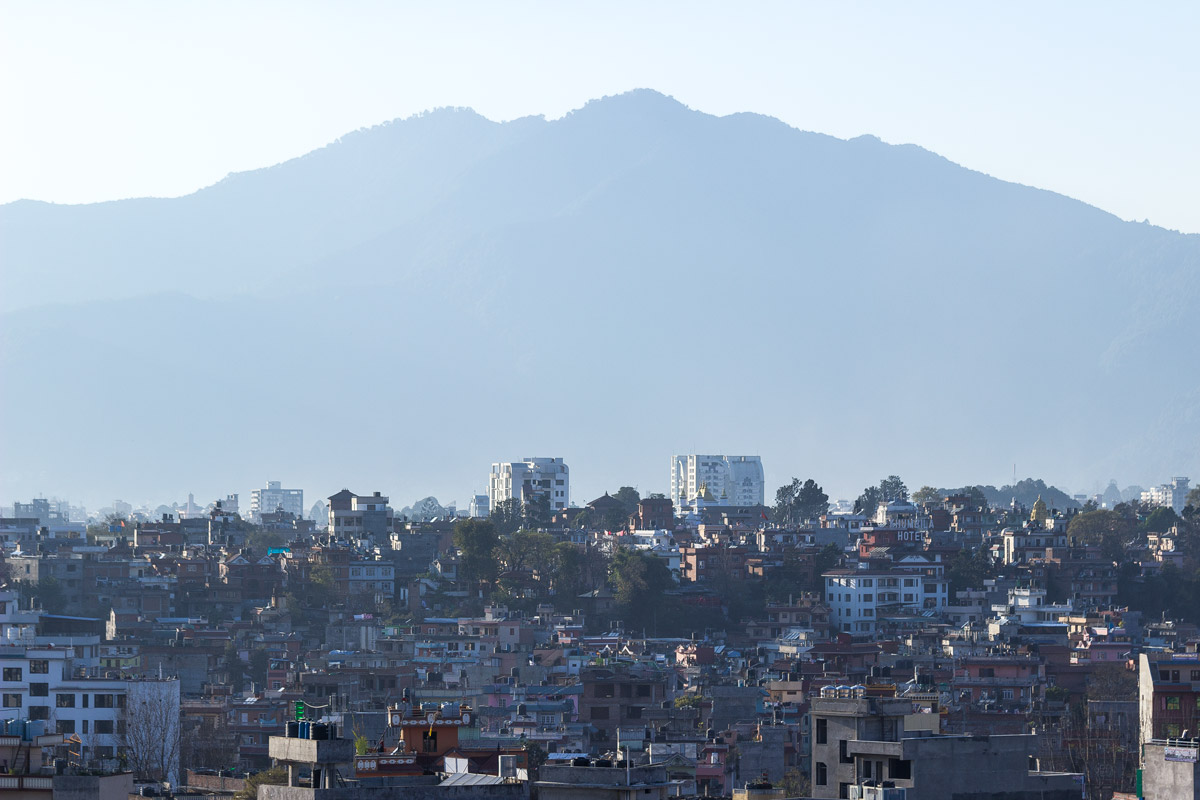
As for the crystal-clear air: Nepal ranks first — first! — in the world in terms of atmospheric pollution. But we will talk about this later. Now, while the reader is not tired, let’s talk about the two most colorful places in the city.
⁂
Kathmandu does not take its eyes off the tourist. Buddha watches over the traveler throughout the city.

The most famous attraction is the Monkey Temple, or Swayambhunath. It is a complex consisting of a stupa and several monasteries, located on a hill. The temple is accessed by a staircase with 365 steps.

The Monkey Temple is called the Monkey Temple because it has many monkeys in it.
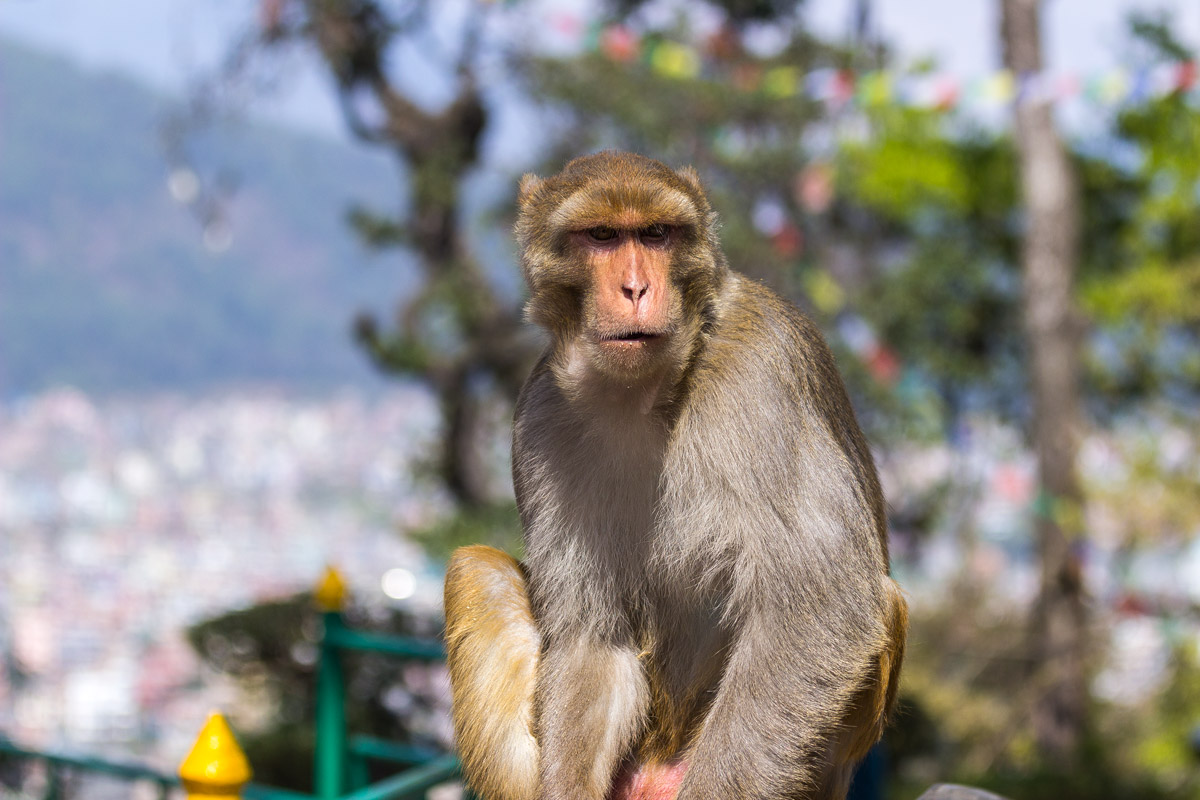
From the temple grounds, you can enjoy the best view of Kathmandu.

Similar houses stretch to the horizon. There are hardly any high-rise buildings. They mostly build 5-7-story structures. Perhaps it’s because of a lack of money or due to earthquakes.

The houses are indeed very poor.
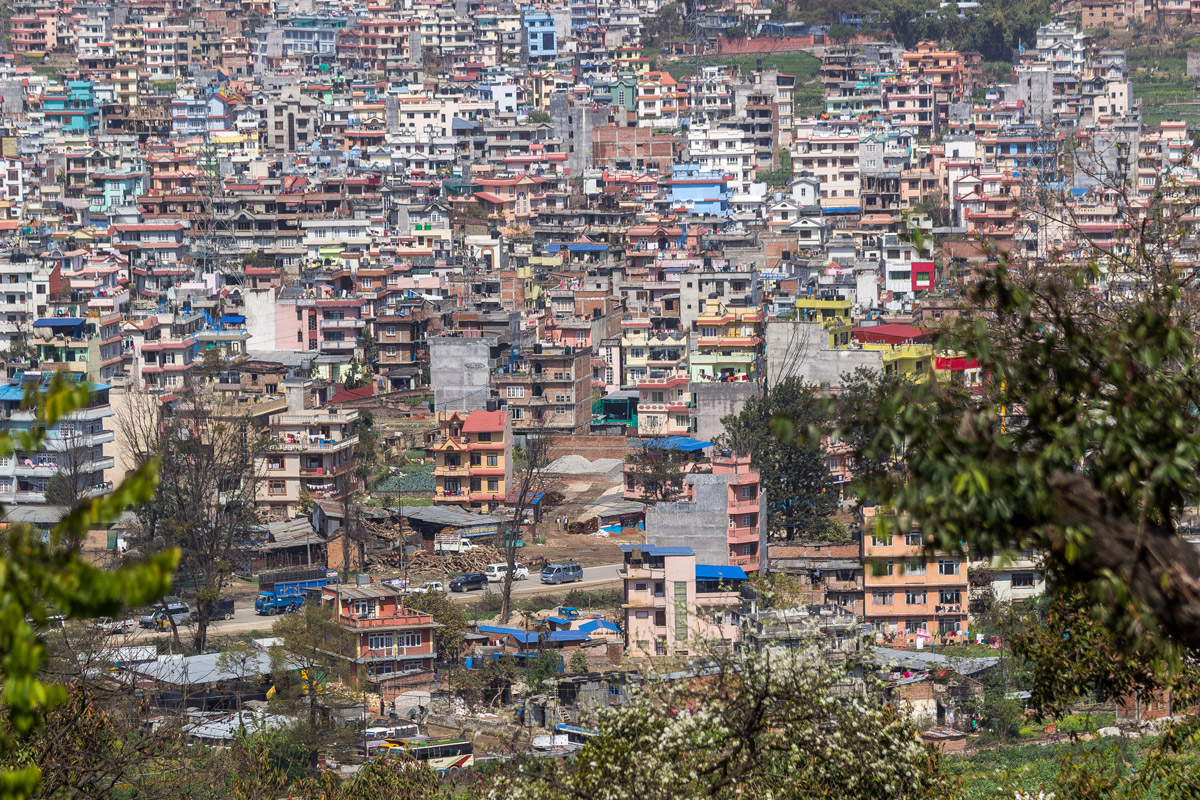
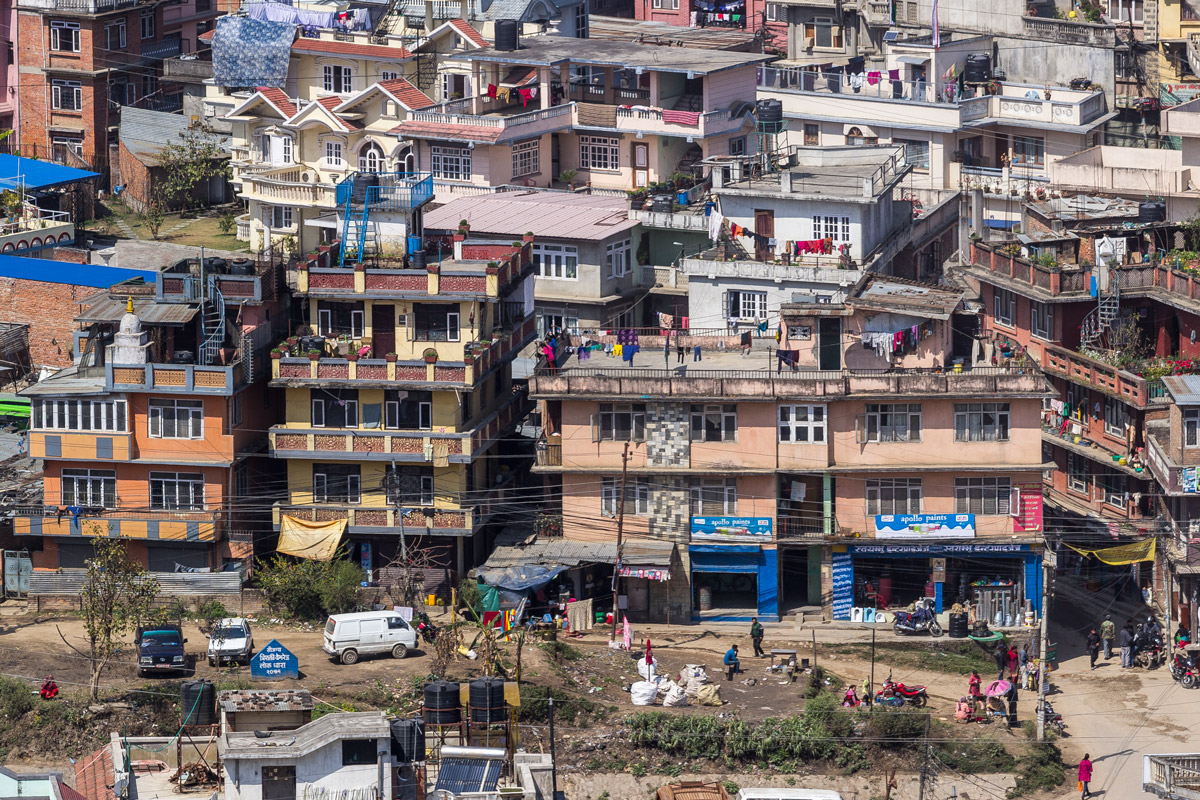
The stupa itself resembles a cake with caramel and a hat. Stupas were previously built to house relics, but now they are simply monuments in sacred places. Most stupas have nothing inside, not even an entrance. They are just mounds of earth and bricks, plastered over.

The eyes on the top look in all four directions and are called the Loving Eyes of Buddha. I don’t know what’s loving about them. They actually look quite fierce.

The stupa is surrounded by prayer drums.
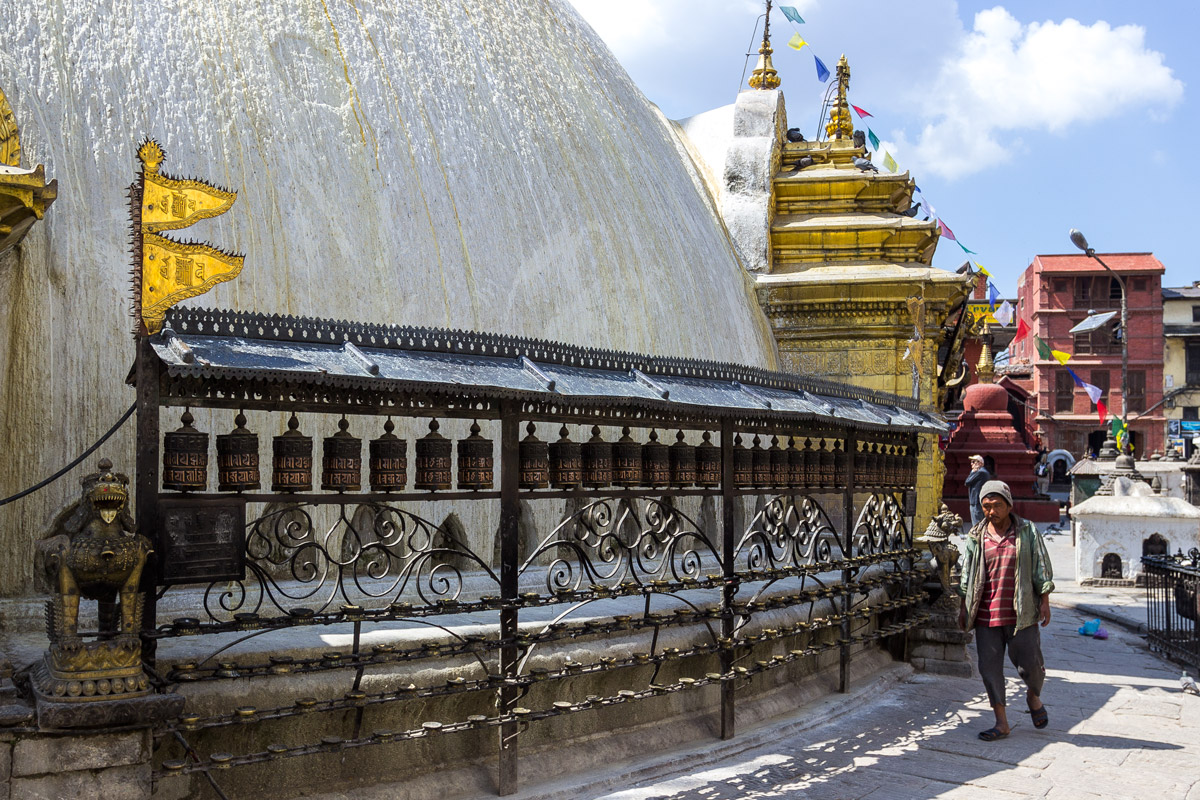
Inside each drum is a scroll with a prayer. You walk around the stupa clockwise, spin the drum with your hand, and the prayer is recited. It’s a convenient religion. Buddhists carry a similar handheld drum, constantly reciting prayers wherever they go.

Near the main stupa, smaller stupas are scattered around.

The colorful cloth flags stretched in all directions from the tops of the stupas are Buddhist prayer flags. The five colors symbolize the five elements: earth, water, fire, air, and space. The flags are used to protect the place from evil. In sacred places, there are so many of them that all the trees are simply wrapped in them.
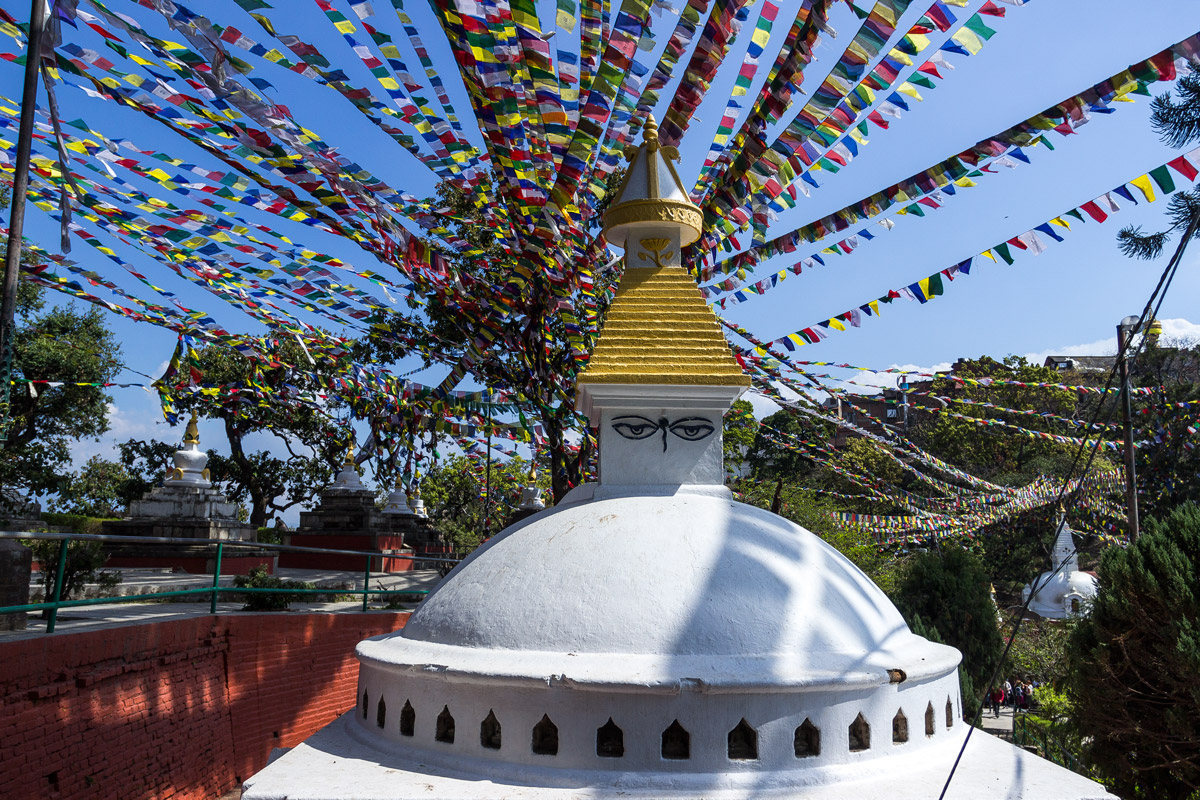
There are not as many Buddhists in Nepal as it may seem, only 10% in total. In Kathmandu, they mainly gather around Swayambhunath.
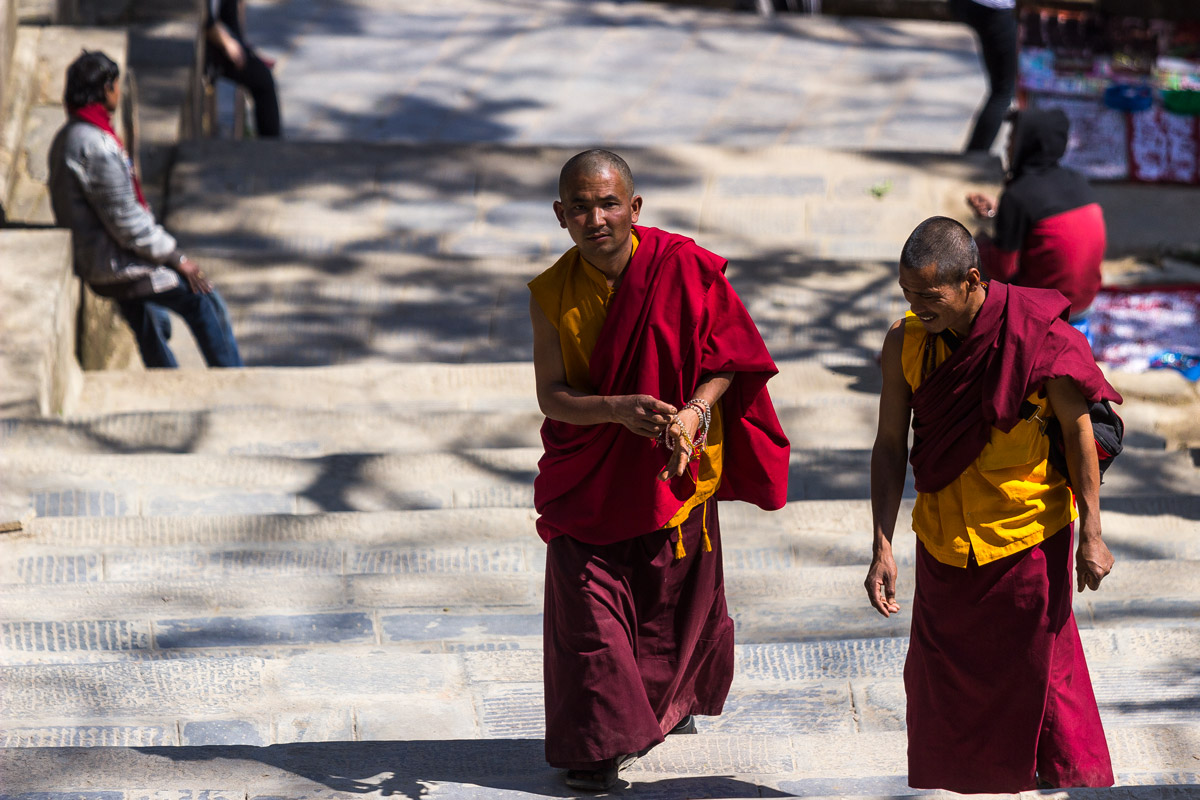
Buddhist attire varies in color in different countries. Nepalese Buddhists wear maroon robes. I sat down and spent time with them. They were discussing something among themselves while occasionally spitting to the sides.

A similar stupa, Boudhanath, is located in another part of the city.
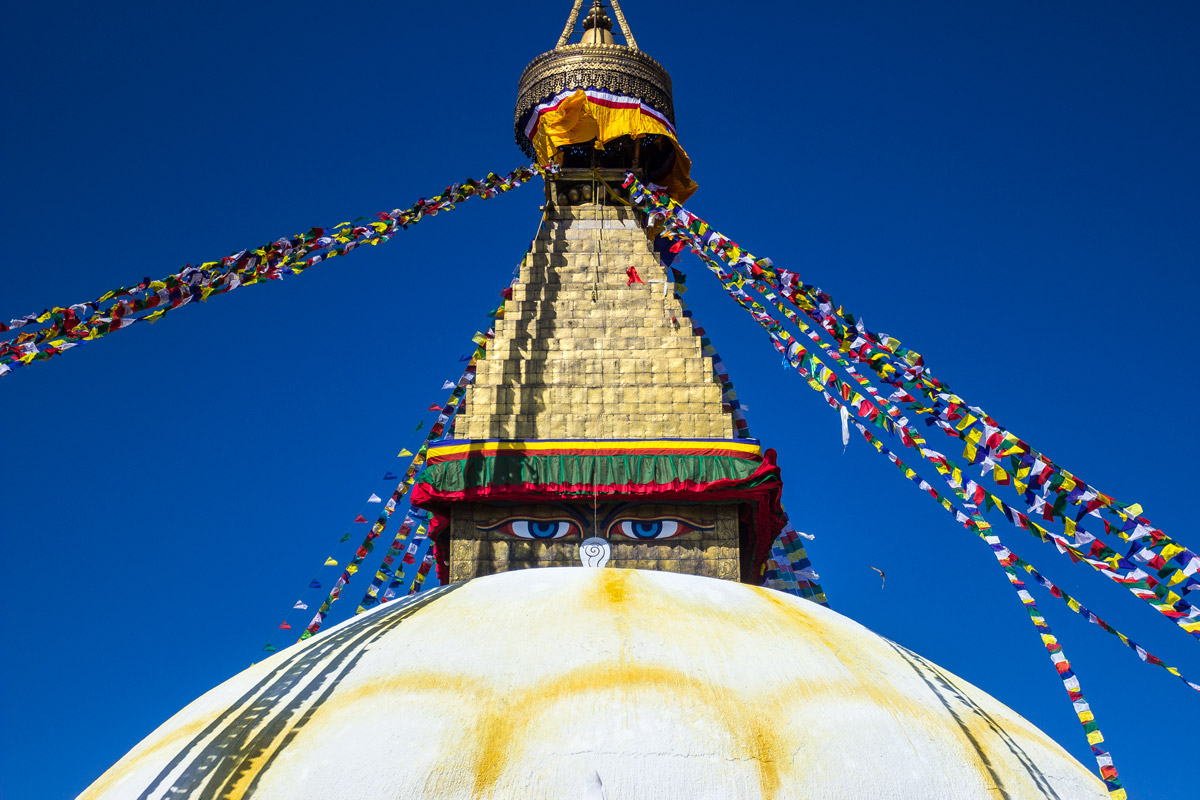
This stupa is twice the size of the previous one.
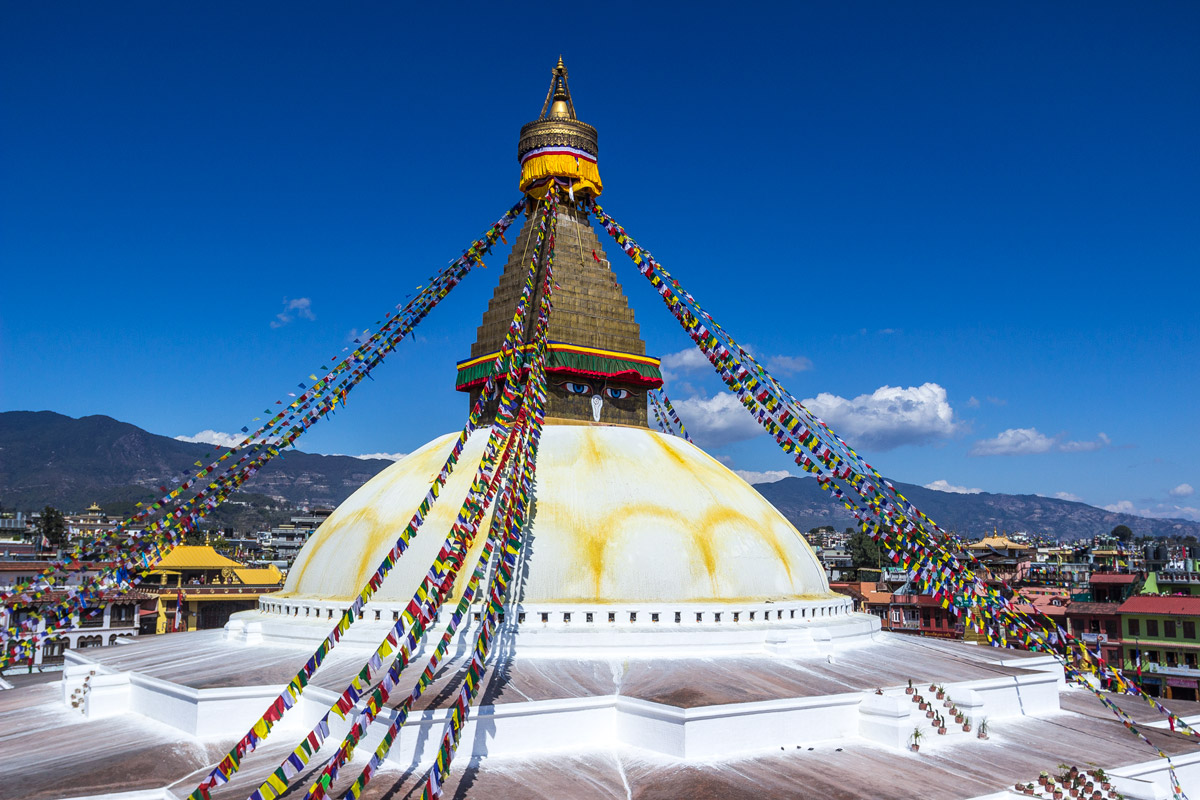

Sitting, eyes sparkling.
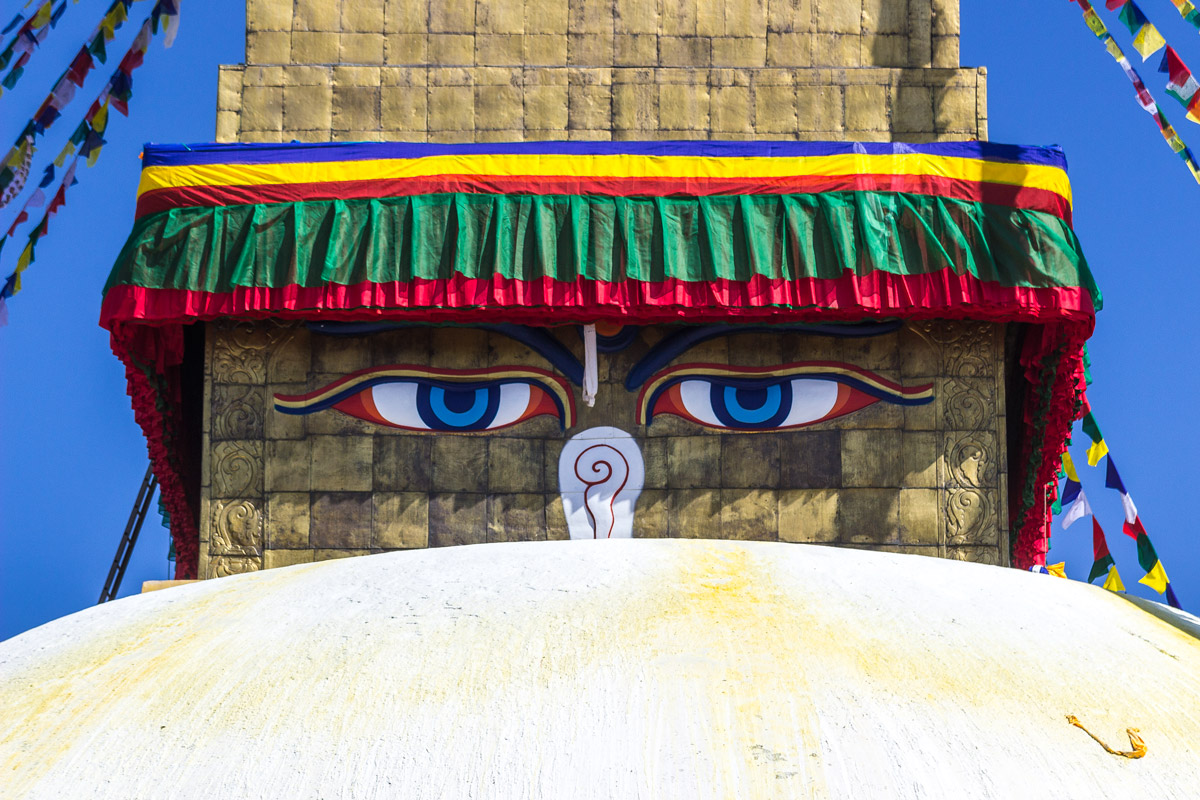
Indeed, there are a great number of stupas in Kathmandu. They are scattered throughout the city. Sometimes, as you walk and peek around a corner, eyes are looking at you from there.

The other tourist spots are not of much interest. Durbar Square is unremarkable. The Garden of Dreams is nonsensical: paying to sit in an ordinary garden. The only thing worth seeing is the cremation at Pashupatinath, which has a separate chapter dedicated to it in the story.

⁂
Let’s return to the city. We stopped at discussing the environment.
In Kathmandu, most people wear masks. Masks are worn by everyone, from children to the elderly. It’s common to walk through the city and come across an entire family of five, all wearing masks. Here, you can find masks of various kinds: from regular medical masks to stylish patterns.


Those who don’t wear masks cover their faces with their hands or a cloth.

The dust in Kathmandu is terrible throughout the city.

Paved road is a luxury in this city. There are not many streets where fresh asphalt is laid and even some kind of semblance of drainage is scraped along the sides.

Most of the roads in Kathmandu are broken and filled with dust.
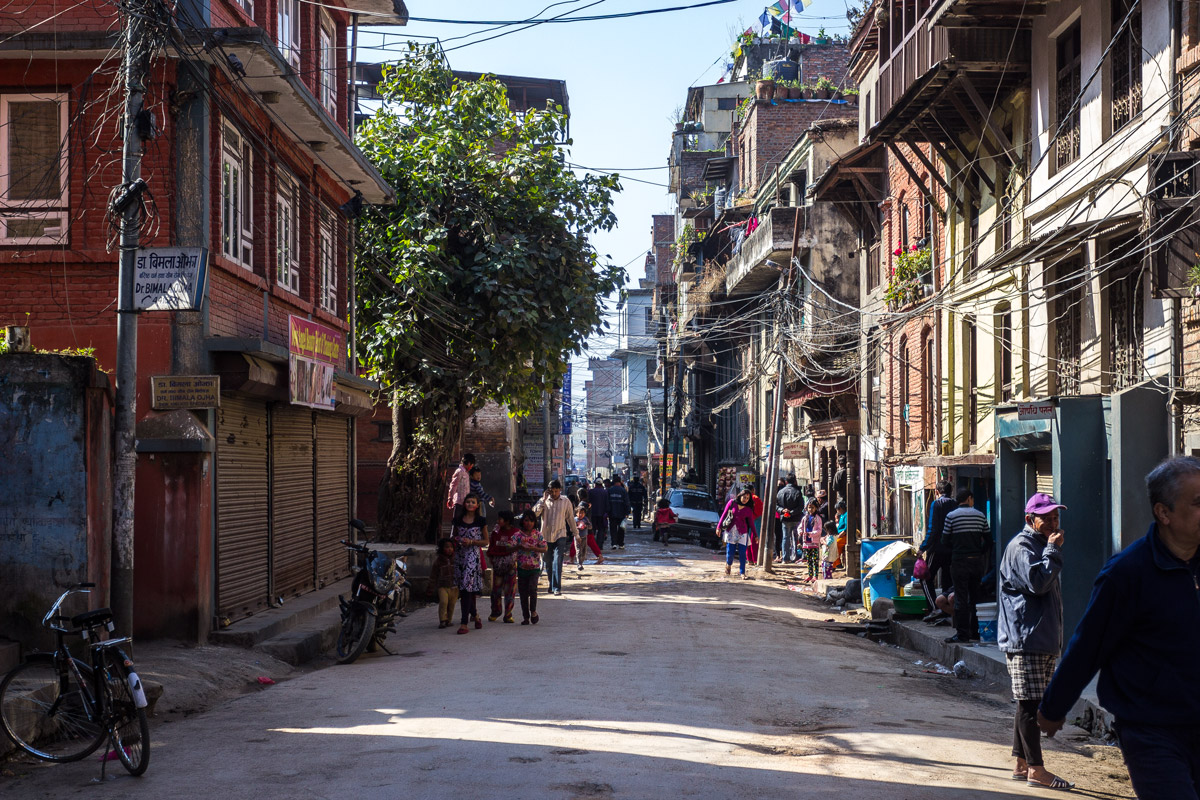
Or mud. The capital of Nepal is simply submerged in mud, just a little rain is enough to see it.

Off-road vehicles are sinking in a mess.
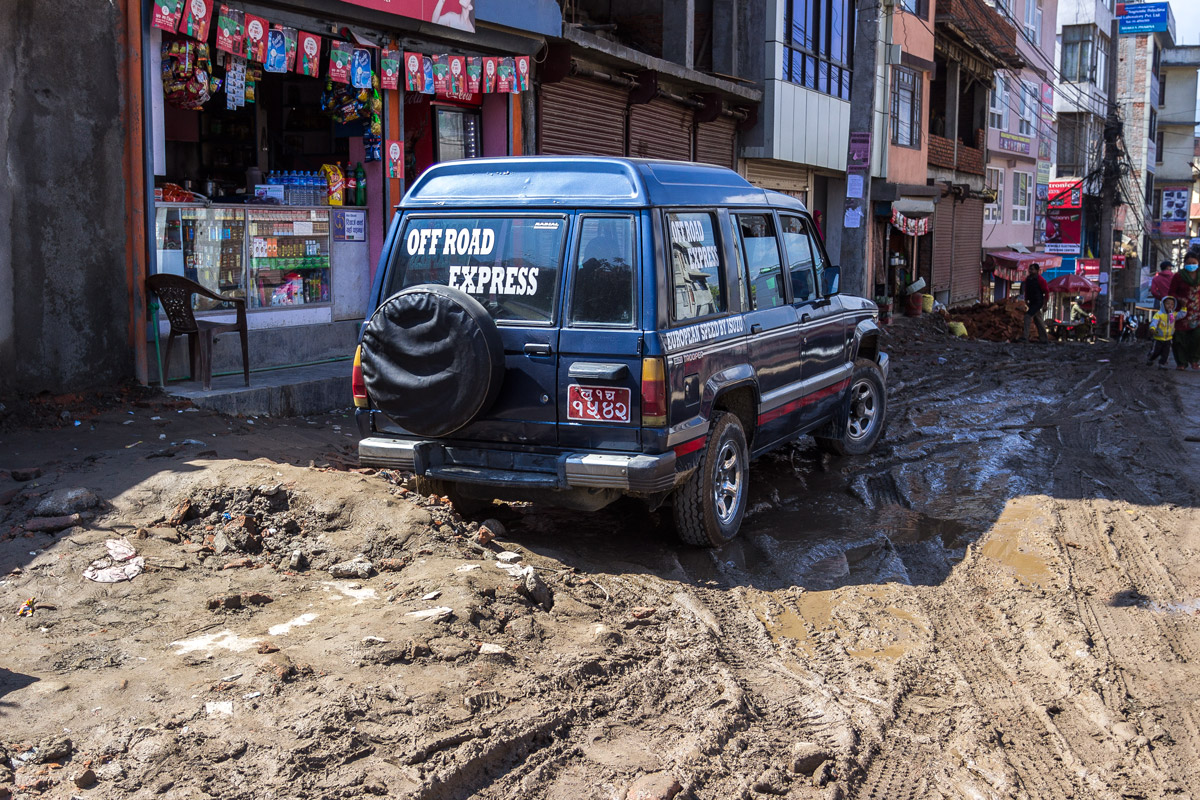
This is not a Russian village, this is the capital of Nepal.

After the rain has stopped, all this mud dries under the sun and then rises into the air, spreading throughout the city by the wheels of cars and motorcycles. Nepal is a vivid explanation of where the dirt comes from. This mechanism works in Moscow as well: cars spread the dust raised on off-road routes throughout the city. The reason is the same — bad roads, lack of drainage, and parking on green spaces. It’s just on a smaller scale.

And what about life expectancy? Everyone has heard the stereotype of a true long-lived person: an enlightened Buddhist living in the mountain ranges of the Himalayas. Perhaps such people exist somewhere, but certainly not in Nepal: here, on average, people die at the age of 68. The main causes of death among Nepalese are heart diseases, cardiovascular disorders, pneumonia, and lung diseases. And all of these ultimately boil down to three factors: horrendous air pollution, smoking, and malnutrition in childhood.
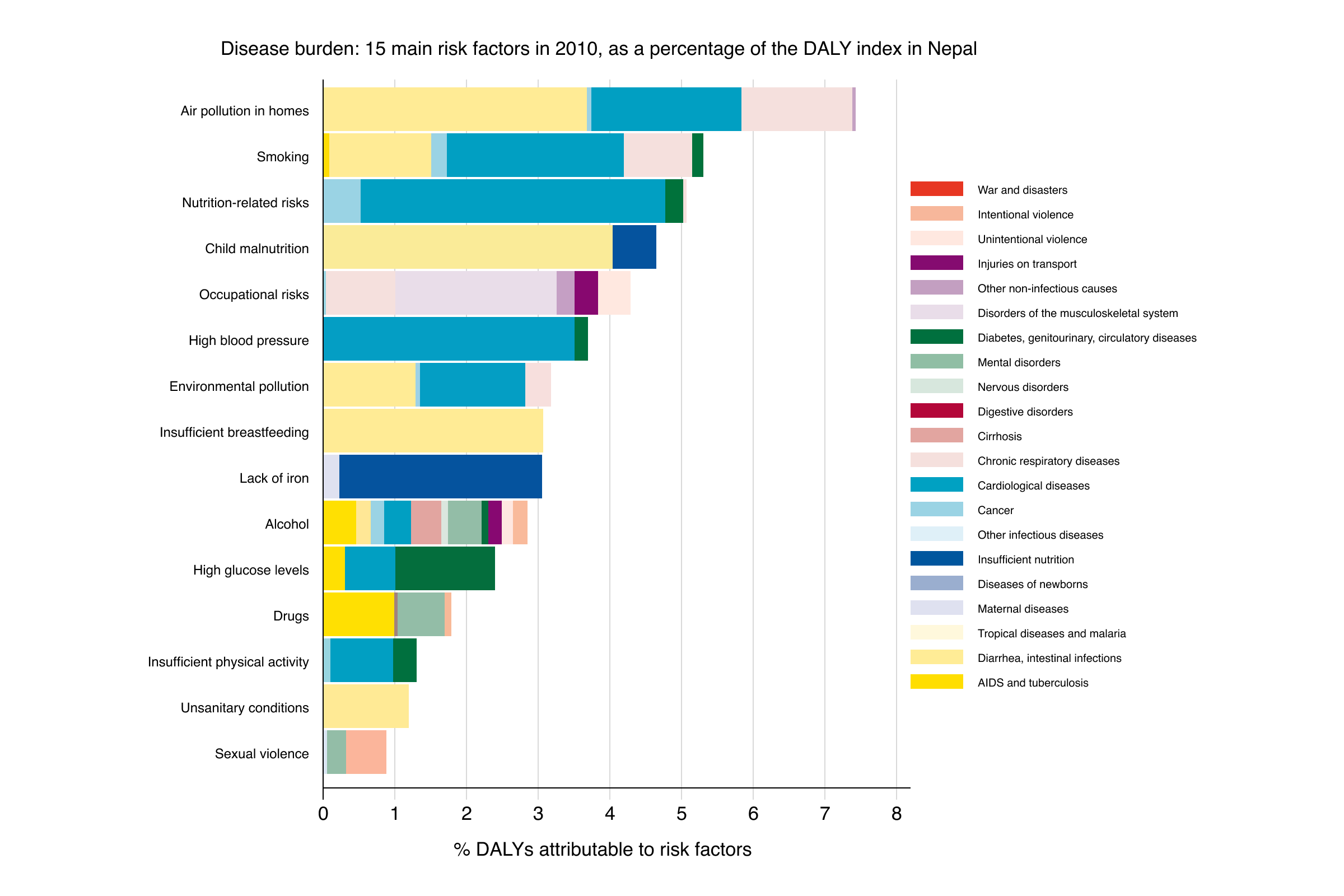
There are numerous causes of air pollution: firstly, the lack of proper roads and an excess of vehicles. Secondly, the use of non-eco-friendly engines. Thirdly, the absence of adequate heating and gas pipelines in homes. Almost the entire city relies on two blankets for warmth, and food is cooked on gas stoves.

On the rooftops of houses, similar to India, there are water barrels. Under the sun, it gets heated quite well, which is especially relevant for saving electricity.
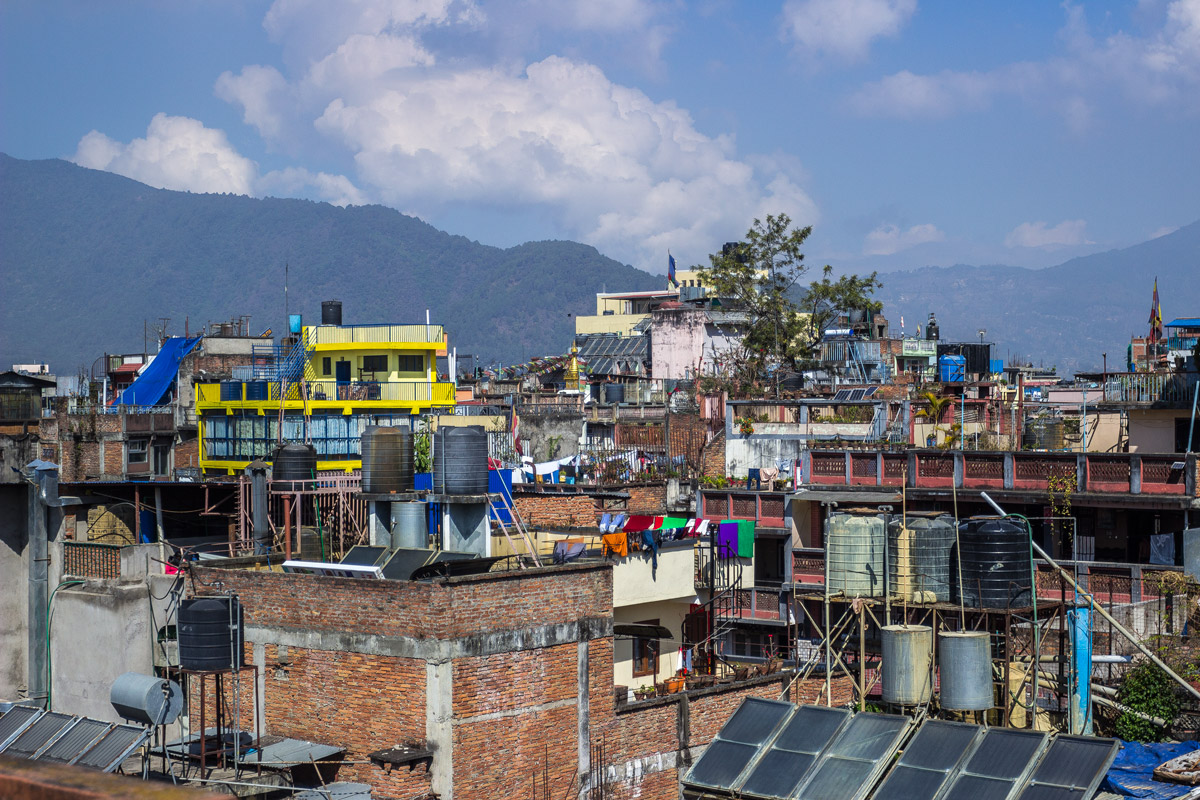
Nepal faces immense electricity problems. Even in the capital, the power is intentionally cut off twice a day for half an hour due to insufficient capacity. Uninterrupted power supply is available only in a few expensive hotels.
Sign on the pole: “Electricity from a biogas generator for street lighting provided by Kathmandu University with support from the Water Supply Fund.”

Poverty. In Kathmandu, the scale of slum catastrophes, as seen in Bangladesh, could not be found. There is hardly any self-built housing or tents in the capital; everyone lives in houses, although statistics show that 2 million people in the country live in slums.
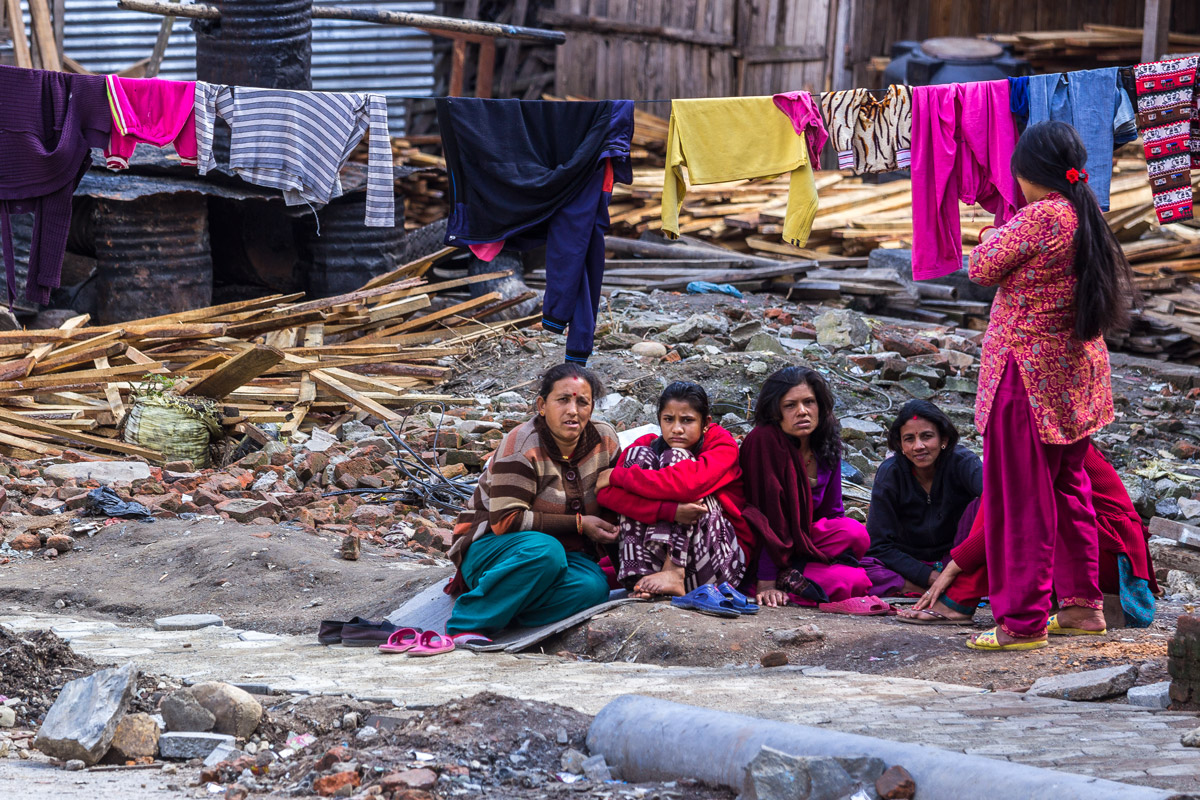
The tourist area of Kathmandu, where almost all the hotels and hostels of the city are located — Thamel — at first glance, is not much different from Delhi’s Paharganj: the same narrow streets with no sidewalks, where people walk alongside cars.

Sometimes it can be quite charming here.
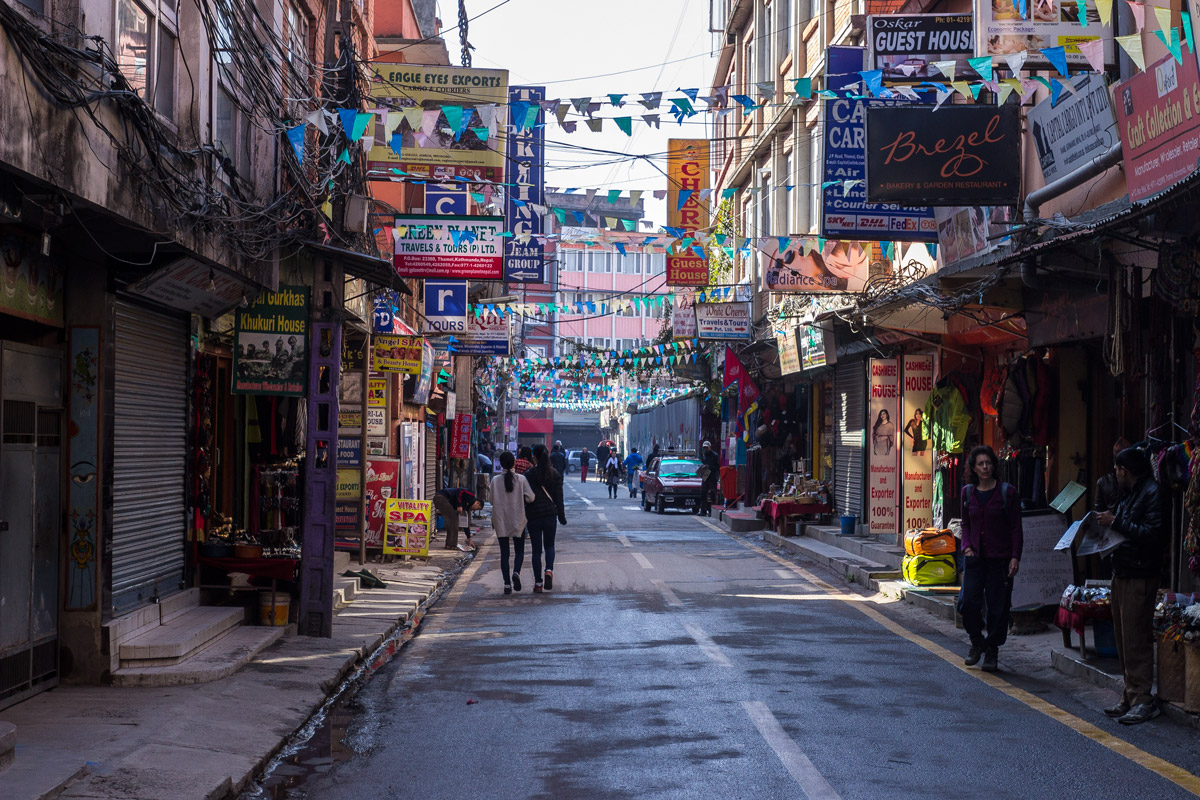

In the morning, the roads are relatively free, but during the day, the typical Indian chaos begins.

The most modern, clean, and well-maintained street in the city that could be found. Even trees planted in pots and a median strip are present.
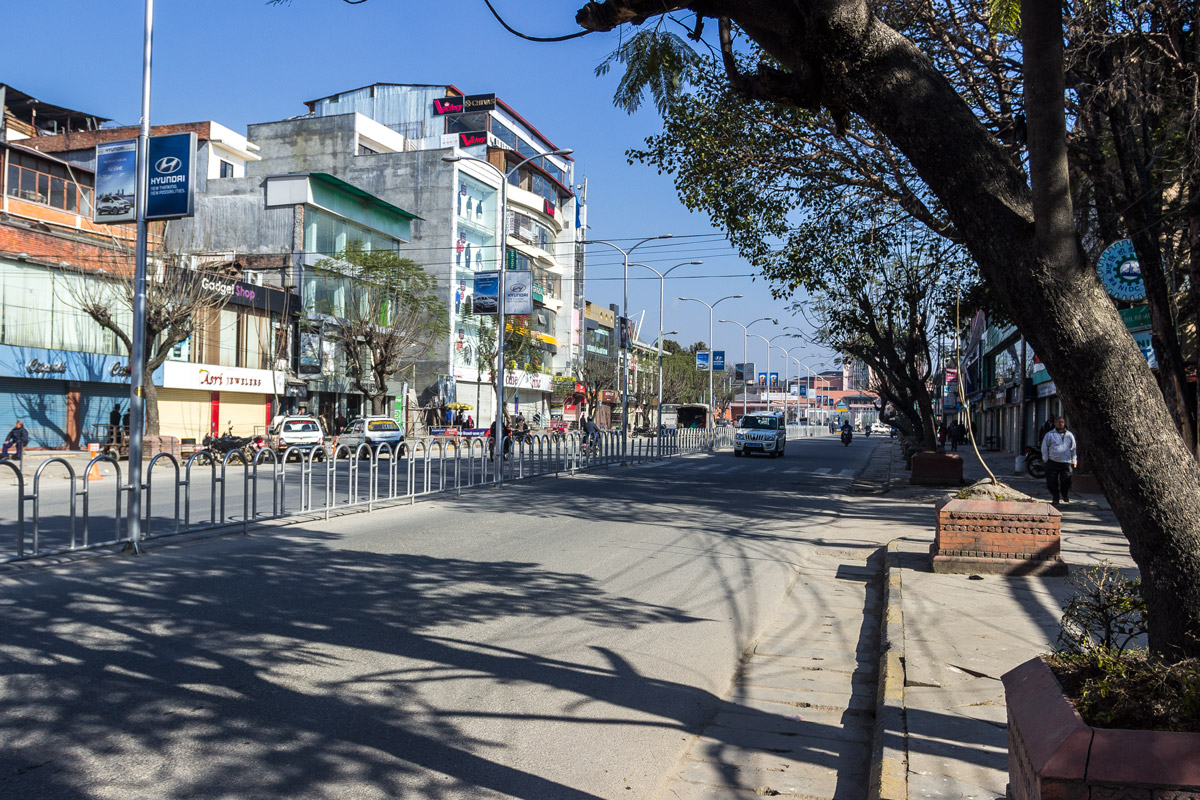
Street trading thrives.

Grocery store.

Summer terrace.

Vegetable stall. In Nepal, there are serious issues with clean water — the tap water is contaminated and not even recommended for washing. Perhaps this is an exaggeration. However, it is definitely advisable to thoroughly wash and peel the purchased fruits.

It’s better not to buy meat at all.

The streets of Thamel are lined with shops. Almost every house has a store open, mainly selling clothes and equipment for mountain trekking.

It’s simply a paradise for hippies here. All the clothing is knitted and colorful.

Once upon a time, Thamel was famous as the Freak Street. Hippies from all over the world gathered here in search of inspiration. It’s not entirely clear how the street looked before, but now it doesn’t stand out in any particular way. However, Nepal still has plenty of freaks.
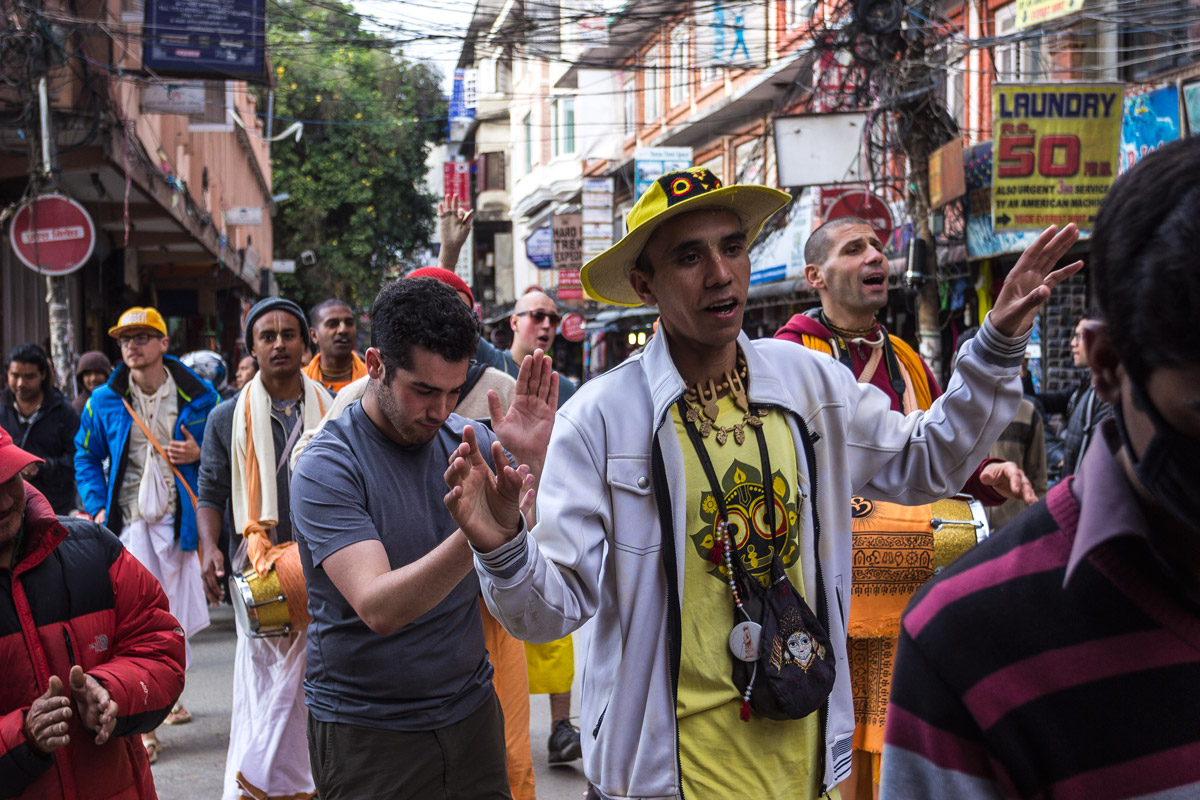
Especially many crazy people come out during the Holi festival. The streets of Kathmandu turn into a military training ground on this day. Children shoot at passersby from balconies and rooftops. One has to walk while pressing their back against the walls.
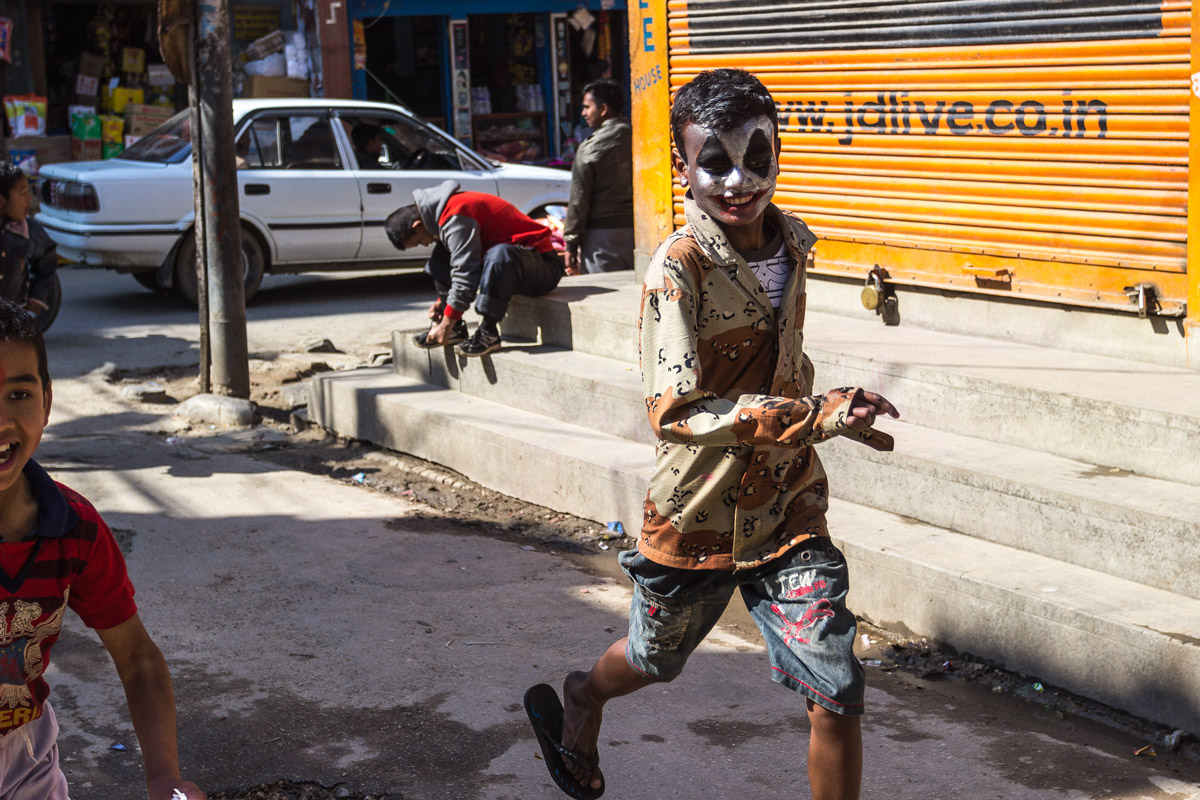
Another district of the city where Boudhanath is located looks even sadder. The houses here are either destroyed or unfinished.

Desert.
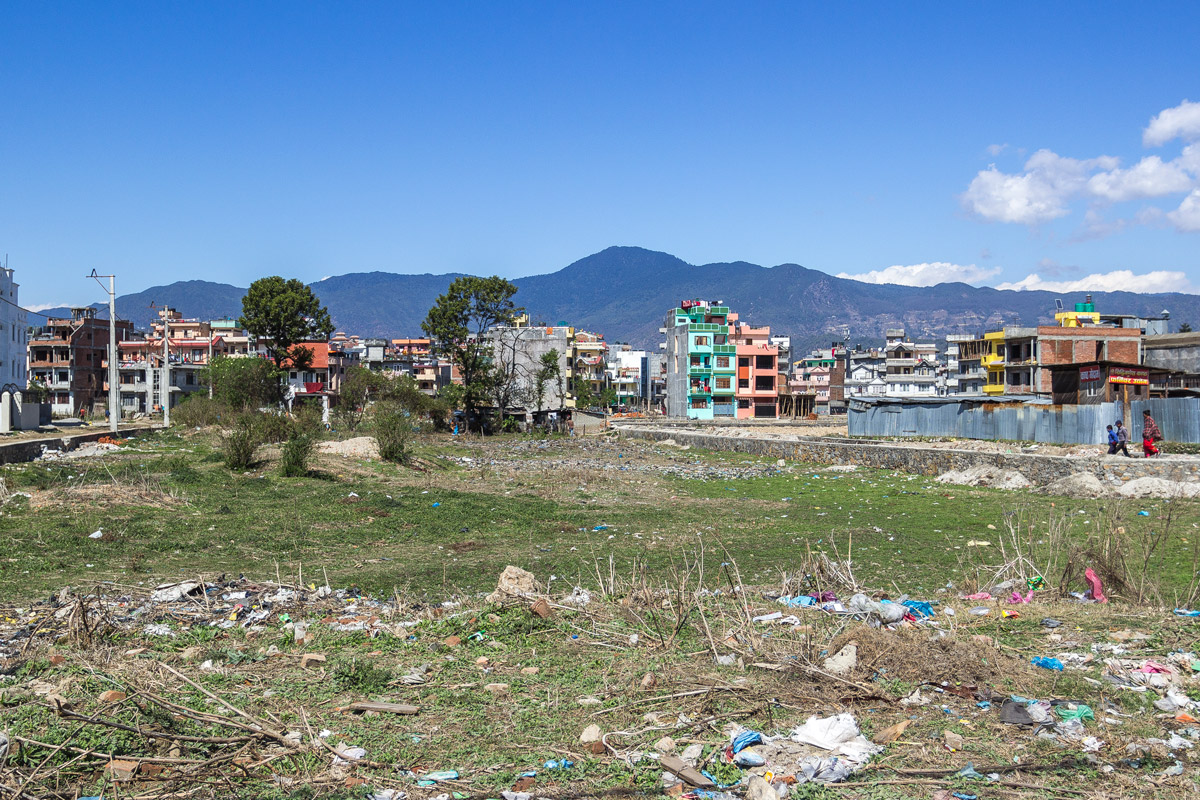
The river is relatively clean. It is a tributary of the Ganges, which is considered sacred. Downstream from here, bodies are brought after cremation.

Yet there is some good housing in Kathmandu. Somewhere near the airport, there are charming houses with balconies adorned with flowers.

A bit of Spain.

There is only one panel high-rise building left in the whole city.

And on the slope of the mountains near Monkey Temple, there is someone’s villa.

Nepalese people are a unique ethnicity. Their faces are something in between Indians and Chinese. The skin tone is not as dark as that of Indians, but not as light as that of Tibetans.

Schoolchildren wear uniforms.

Grandfathers wear funny hats resembling either mushroom caps or Mount Everest. Kathmandu rarely experiences freezing temperatures, but there is also no extreme heat in the summer. Cool evenings around ten degrees Celsius throughout the year require dressing warmly.


Typical men’s clothing in Nepal includes a shirt or sweater, a mid-season jacket, and trousers matching the suit.
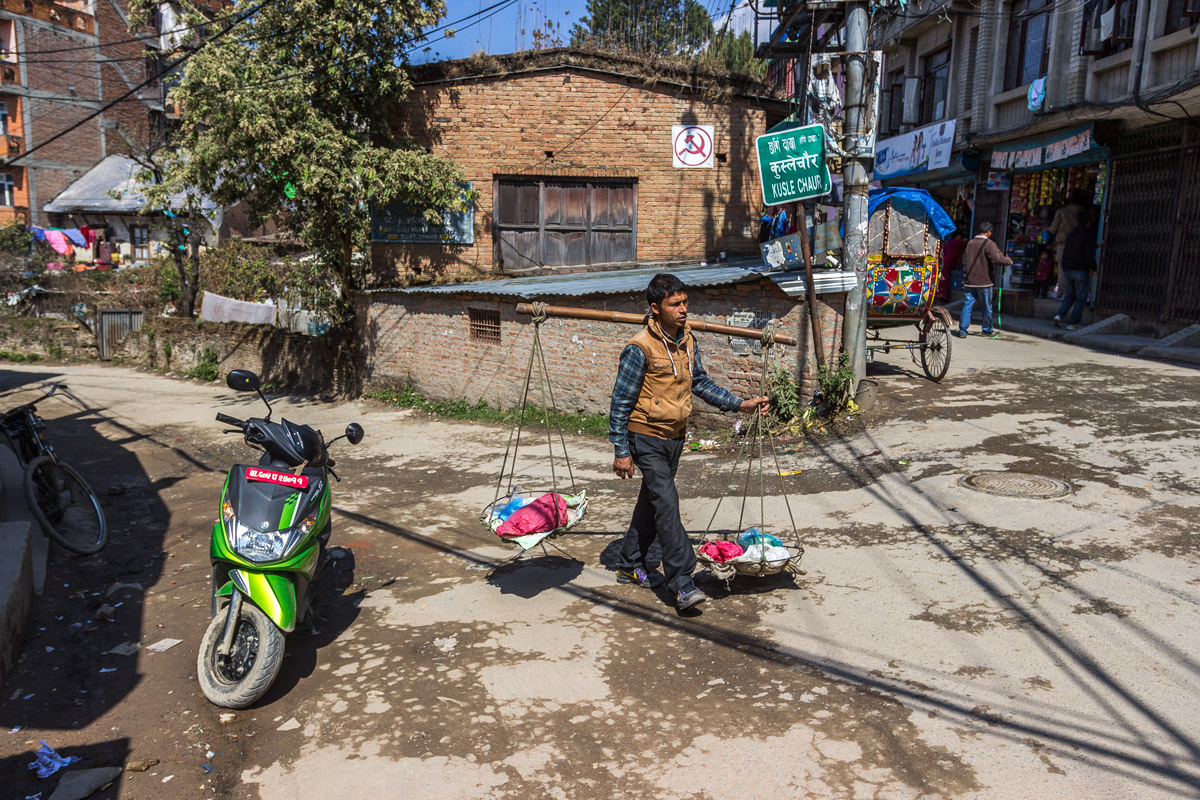
The youth is actively trying to resemble Koreans.

Piles of wires on the poles. It would be interesting to see statistics on which country has the largest tangles of wires.



Cycle rickshaws. A local feature is the mandatory umbrella over the driver.



Makeshift taxis, converted from Chinese wrecks.

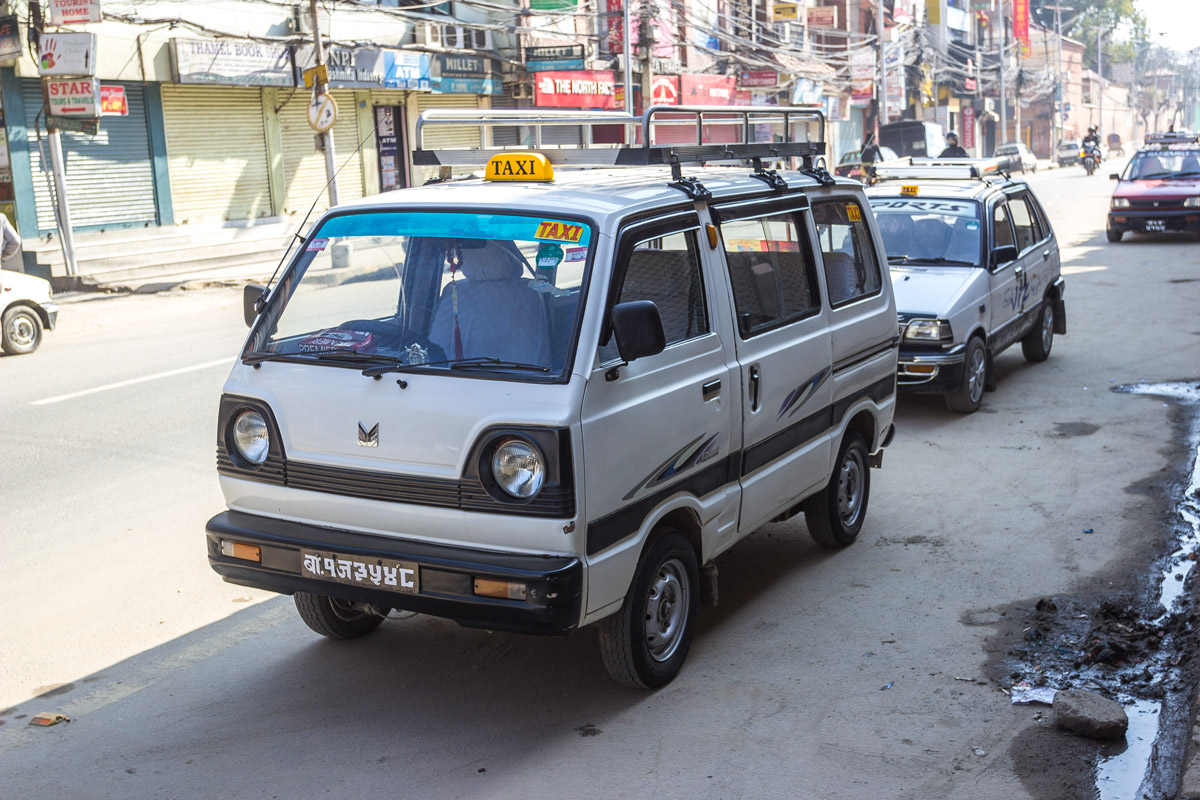
Mailbox. Incredibly beautiful.

A traffic controller’s post is equipped with a water cooler. Masks to protect against dust are also provided to the traffic officer.


Indeed, Nepal is a very poor country. Even Bangladesh looks relatively better in comparison. There is absolutely nothing to do here except for circling around the stupa once and heading towards the mountains.
However, the country is completely unprepared even for that. During my trip, a Turkish plane collapsed at Kathmandu airport. It would be an exaggeration to say “collapsed” — something just happened with the landing gear. As a result, the airport was closed for four days! They couldn’t remove the plane from the runway.
During those four days, forty thousand tourists accumulated at the airport gate who couldn’t leave the country. Nepal has only one international airport. There are backup runways, but for some reason, they couldn’t be used.
It took four days to finally tow the plane and free up the runway for takeoff. Four days! Oh, Buddha! Those forty thousand people could have manually pulled the plane in a matter of hours! All this time, I observed the process from my hotel window, ironically overlooking the ill-fated plane.

Just a month later, a powerful earthquake struck Nepal, claiming the lives of nine thousand people and devastating half of the city.




It is very unfortunate for this wonderful country. There are no hopes that anything will change for the better here in the next few decades.



